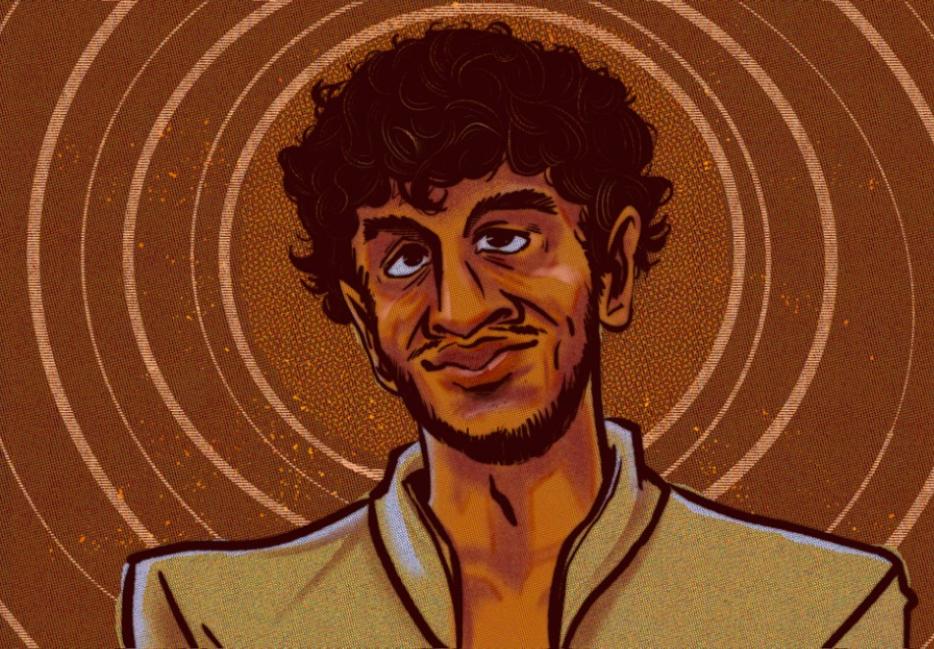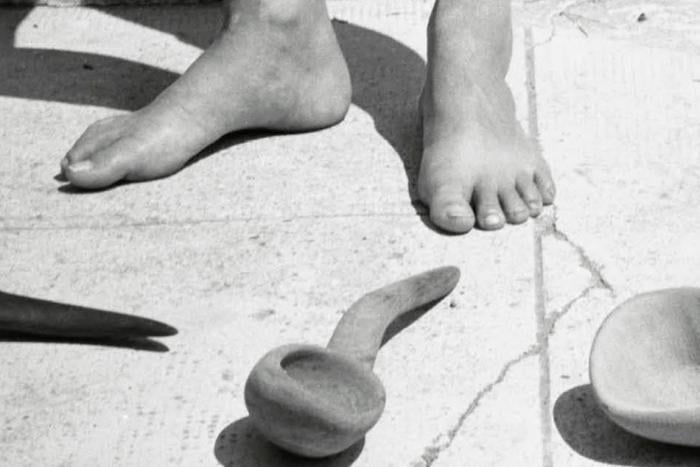Welcome to Wayward Watching, a column on the seen and unseen in film.
The first time he visited India in 1962, the writer V.S. Naipaul was famously impossible to please. He grew up in an Indian family in colonial Trinidad, before moving to England at eighteen: as a minority in both countries, his imagination was “permeated with a sense of difference.” But the moment he stood on the platform of a train station in Bombay, he felt he’d become “faceless…in that Indian crowd.” In An Area of Darkness, the book Naipaul wrote about his first encounter with his ancestral land, he claimed that you couldn’t be an Indian living in India and attempt to write an original novel, because the literary form apparently belonged to the West. Naipaul read Gandhi’s autobiography and dismissed the great man as a self-absorbed fraud, because the book didn’t contain “a word of anything seen or heard that did not directly affect the physical or mental well-being of the writer.” But he liked early Indian films—or, to be specific, just their pithy names:
They were straightforward, but they held infinite suggestion. Private Secretary: in India, where kisses were barred from the screen, the mind could play with such a title: the “progressive” girl, the attractive office job (typewriter, white telephone), the mixing of the sexes; irregular love; family life threatened; tragedy… Junglee (untamed) was another title: a woman against a background of Himalayan snow. For Maya (cosmic illusion, vanity) a woman was shown weeping big, bitter tears. Jhoola (the swing) promised gaiety, many songs and dances. Then, as sinister in suggestion as Private Secretary, Paying Guest.
I thought of this passage recently while watching Saim Sadiq’s Joyland (2022). The film more or less sticks to the plot Naipaul imagined for Private Secretary sixty years ago: irregular love (or rather, the sexual bliss implicit in the title) is still a marketable threat to the orthodox South Asian family setup, more so when it culminates in a tragedy. We are in an enigmatic neighbourhood in old Lahore, where people are forever impeccably dressed but also weirdly slaughtering goats in their courtyard. The protagonist Haider (played by Ali Junejo) has the suave, perfectly upper-class face of someone who would never be faceless in a crowd, and yet we’re supposed to believe he is poor enough to audition to be a background performer in a transgender-woman-led dance troupe. The trans woman, Biba (played by Alina Khan), is, of course, portrayed as an unapologetic badass: she smokes, and swears, and zips around the city on an incongruously red scooter. Her gestures are palatably flashy, her traumas gratuitous and stark. We first see her scamper around in blood-soaked clothes in a hospital corridor, moments after witnessing the murder of another trans woman. Before falling in love with Haider, she takes off his shirt midway through a rooftop rehearsal session, just so he can feel comfortable in his skin.
“Does your wife know you are here?” Biba asks Haider, a couple of hours before making out with him in a dark alley. This is what passes for inner conflict in a story that constantly aspires to be subtle while lacking substance. It is obvious early in the film that said wife, Mumtaz (Rasti Farooq), has an inkling of her husband’s waywardness. When Haider’s hands tremble at the prospect of killing a goat in his father’s presence, she impatiently grabs the knife and completes the deed. She protests alone when her father-in-law tells her to quit her job in a bridal salon and assist her sister-in-law in the kitchen. Haider, of course, would rather die than speak up in front of his dad. Husband and wife can never have sex because they are forced to share their bed night after night with one of Haider’s four little nieces. The overwhelming sensation of watching Mumtaz reconcile herself to a life of domestic drudgery in a Punjabi joint family is one of incredulity: Why does her alabaster skin look like it has never been exposed to the subcontinental sun? Why are her curls never out of place? She never breaks a sweat—not while dragging an air cooler down the stairs with her sister-in-law, not while gussying up a bride’s face in the dark during a power shortage, not even while masturbating alone at night next to the bathroom window. Much like a quintessential Bollywood heroine who can cry a full river without bungling her makeup, Mumtaz toils away in the house all day and talks about buying a couple of air-conditioners, but we don’t see her perspire.
Sadiq has spoken in interviews about not wanting to cater to the Western trope of the uplifting loner queer bildungsroman story. According to him, South Asian societies are “very collectivist in nature… Because when one person decides to make a choice or a good or bad decision, it affects everybody around them in a much bigger and deeper way.” But the producers of Joyland are all American—Sadiq started writing the movie as a film student at Columbia—and it caters to tropes more insidious than Orientalist alibis for community and conformity. One senses that Sadiq is afraid of his characters, and frames, being perceived as typical in any way: it is a version of the diasporic horror, shared by Naipaul, of failing to stand out, of not being recognised in a crowd. Biba’s red scooter; Haider’s job as a “Bollywood-style” dancer; even the movie’s promotional poster by New York’s hottest painter of the moment, Salman Toor—these are carefully curated traits, meant not to enhance our understanding of the characters, but to make them appear quirky enough to the Western gaze. Why else would Haider and Mumtaz be saving up not to buy a second bed for the niece who always bunks with them, but instead for an air-conditioner, as if they were a couple straight out of a case study about increased economic consumption in the global south? The film feels tonally inspired by what is now widely understood online as the house style of the Manhattan-based indie production house, A24 Films: pretty people exploring their suppressed desires in moody lighting, something that looks arty but isn’t art.






